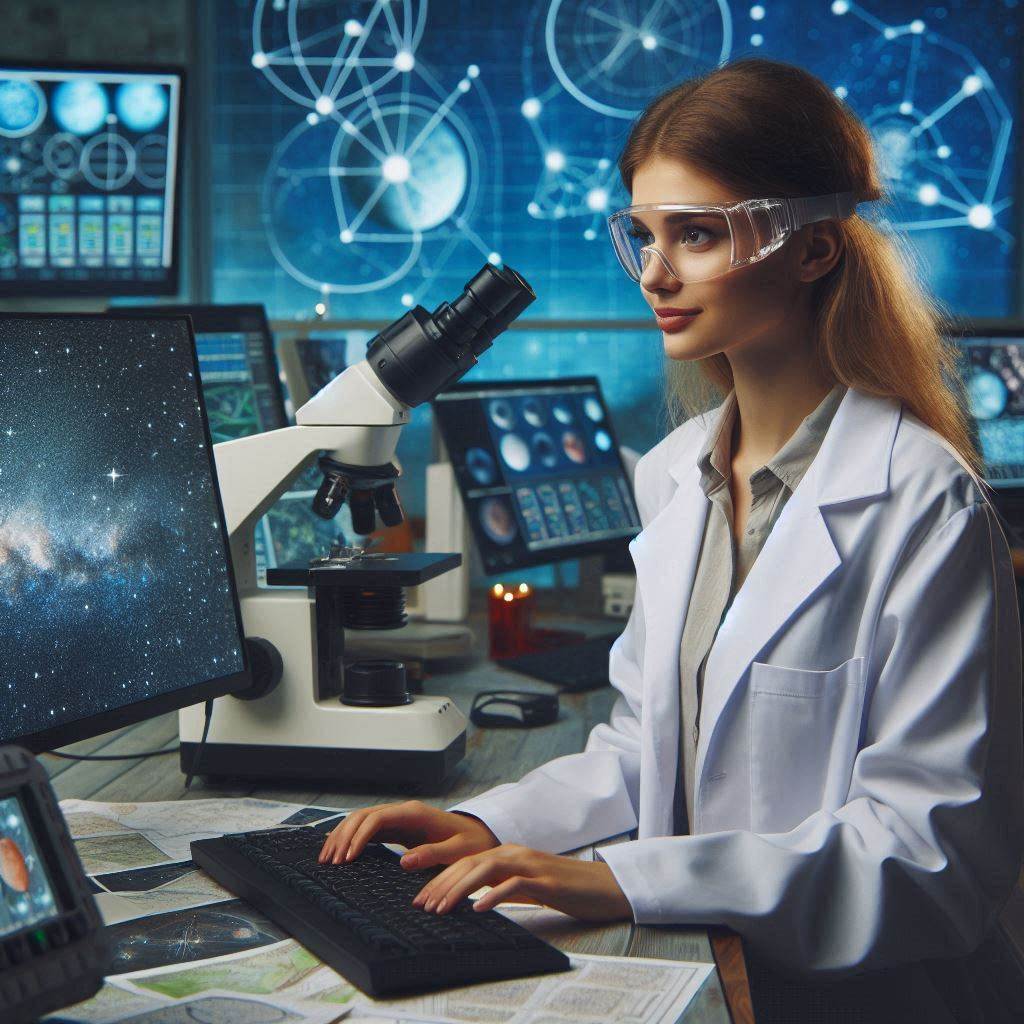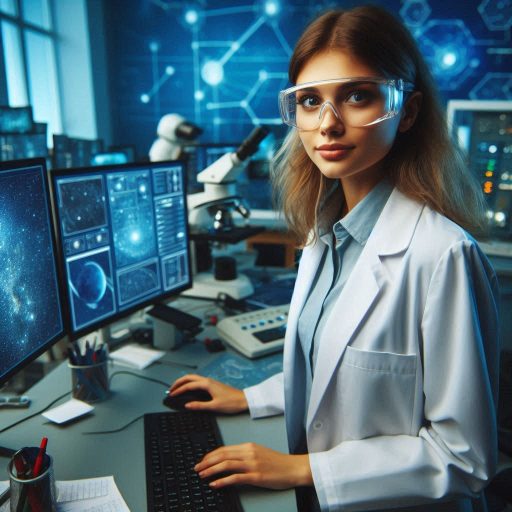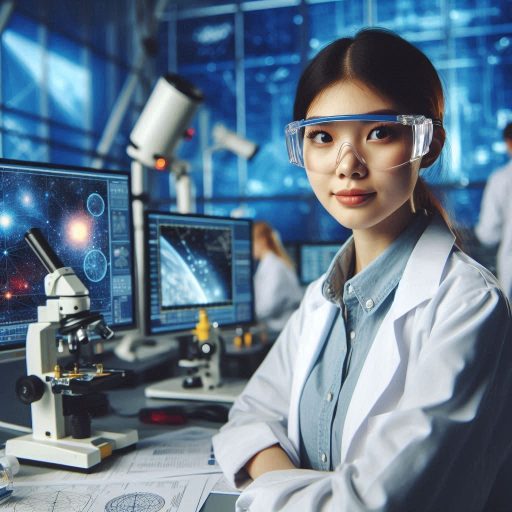Introduction
The intersection of space science and artificial intelligence (AI) is revolutionizing space exploration and research in profound ways.
As humanity seeks to understand the universe, AI technologies enhance our ability to analyze vast amounts of data generated by space missions.
Traditional methods of data analysis can be slow and labor-intensive, but AI algorithms can process information quickly and efficiently.
This acceleration allows scientists to make informed decisions more rapidly and accurately than ever before.
The synergy between space science and AI significantly advances our understanding of the universe and improves mission outcomes.
For example, AI algorithms can process images from powerful telescopes, helping scientists identify celestial bodies and analyze their properties.
These algorithms can recognize patterns in data that human analysts might miss, leading to groundbreaking discoveries.
Furthermore, autonomous spacecraft equipped with AI can navigate through space, adapt to unexpected situations, and optimize their operations without constant human intervention.
This capability is crucial for missions that venture far from Earth, where real-time communication may not be possible.
The significance of this intersection extends beyond exploration; it also has practical applications in various aspects of space science.
The role of AI in analyzing space data
How AI Algorithms Can Analyze Vast Amounts of Data Collected from Space Missions
Space missions generate enormous volumes of data.
Satellites, telescopes, and other instruments collect diverse information about celestial bodies.
Analyzing this data manually is impractical and time-consuming.
AI algorithms streamline this process by automating data analysis.
AI can quickly identify patterns and anomalies in complex datasets.
For instance, machine learning models can sort through images captured by telescopes.
They can recognize features that humans might miss, like faint celestial objects.
This capability accelerates discoveries and enhances our understanding of the universe.
Moreover, AI algorithms can assist in predictive modeling.
By analyzing historical data, they can forecast future events in space.
For example, AI can predict solar flares based on previous activity, helping protect satellites and astronauts.
This predictive power is invaluable for mission planning and safety.
Specific Examples of AI Technologies Used in Analyzing Space Data
Several AI technologies are making significant contributions to space data analysis.
Machine learning, a subset of AI, plays a pivotal role.
Researchers use machine learning algorithms to analyze astronomical data from various missions.
One notable example is the use of convolutional neural networks (CNNs).
Scientists employ CNNs to process and classify images from telescopes.
These networks can automatically identify celestial objects, such as galaxies or exoplanets.
This automation saves time and enhances the accuracy of data classification.
Another example is NASA‘s use of AI in the Mars Rover missions.
The rovers utilize AI algorithms to navigate the Martian terrain autonomously.
These algorithms analyze data from onboard sensors and make real-time decisions.
This capability allows the rovers to explore more efficiently and cover greater distances.
Additionally, AI-driven data analysis supports gravitational wave detection.
The LIGO project uses machine learning algorithms to filter out noise from gravitational wave signals.
By identifying genuine signals, researchers can study cosmic events like black hole mergers.
AI is also instrumental in analyzing climate data from space-based sensors.
Satellite missions collect data on Earth‘s climate and atmospheric conditions.
AI algorithms help scientists model climate change scenarios and predict future trends.
This information is crucial for understanding our planet’s health.
Read: Preparing for a Botany PhD: Tips and Advice
AI applications in autonomous spacecraft navigation
AI for Autonomous Spacecraft Navigation
Firstly, AI enables spacecraft to navigate through complex environments efficiently.
Advanced algorithms analyze data from sensors and cameras to determine the best course.
These systems can process vast amounts of information quickly, allowing them to adapt to changing conditions.
For instance, AI can help spacecraft avoid obstacles during landing.
It assesses terrain features, identifies hazards, and selects safe landing sites.
By automating these processes, AI reduces risks and increases the likelihood of successful landings.
AI systems also enhance communication between spacecraft and mission control.
They can prioritize data transmission, ensuring that critical information reaches Earth promptly.
This capability is crucial for missions operating far from our planet, where communication delays can pose challenges.
Examples of AI Systems in Autonomous Navigation
NASA’s Mars rovers exemplify the successful application of AI in autonomous spacecraft navigation.
The Mars rovers, such as Curiosity and Perseverance, utilize AI algorithms to traverse the Martian landscape.
These rovers analyze their surroundings, identify landmarks, and chart their paths independently.
For example, Curiosity employs an AI system called the “Aerial Vehicle” that processes data from its cameras and sensors.
This system allows the rover to make decisions about its movements based on terrain analysis.
By navigating autonomously, Curiosity can explore more areas efficiently and gather valuable scientific data.
Perseverance, another Mars rover, uses AI for its autonomous navigation system called “AutoNav.
” This system enables the rover to plan its route while avoiding obstacles.
AutoNav allows Perseverance to drive significant distances without waiting for commands from Earth, which is essential given the communication delay.
Another notable example is the European Space Agency’s (ESA) Rosetta mission.
Rosetta used AI to navigate to a comet and successfully deploy a lander.
The mission required precise navigation, and AI played a crucial role in guiding the spacecraft through complex trajectories.
Read: Interdisciplinary Research: Botany and Other Sciences
Enhancing space exploration with AI-powered robotics
Robots have become essential tools in space exploration, enabling scientists to gather data in harsh and distant environments where humans cannot easily reach.
With the integration of artificial intelligence (AI) into robotics technology, these machines can now make independent decisions and adapt to changing conditions, making them even more valuable assets for space missions.
Use of AI in robotics technology for space exploration missions
- AI algorithms allow robots to analyze data in real-time and autonomously adjust their actions based on the information gathered.
- Robotic explorers equipped with AI can navigate challenging terrain, withstand extreme temperatures, and perform complex tasks without constant human intervention.
- AI-powered robots can assist in the search for signs of life on other planets, collect samples for analysis, and conduct experiments in hostile environments.
- By leveraging AI, robotic missions can be more efficient, cost-effective, and capable of achieving scientific objectives that were previously impossible.
Advancements in AI-powered robotic exploration
One notable example of AI-powered robotic exploration is the European Space Agency’s (ESA) ExoMars rover.
Scheduled to launch in 2022, this state-of-the-art rover will be equipped with sophisticated AI capabilities to navigate the Martian terrain and conduct scientific experiments.
- The ExoMars rover will use AI algorithms to analyze data collected from its surroundings, identify interesting features, and prioritize scientific targets for closer inspection.
- Equipped with a drill and a suite of scientific instruments, the rover will be able to collect samples and analyze them on-site, providing valuable insights into the geology and chemistry of Mars.
- By incorporating AI into the ExoMars mission, scientists hope to maximize the rover’s productivity, enhance its autonomy, and increase the chances of making groundbreaking discoveries on the Red Planet.
- The success of the ExoMars mission could pave the way for future AI-powered robotic explorers to visit other celestial bodies in our solar system and beyond.
In essence, the intersection of space science and AI has opened up new possibilities for exploring the cosmos.
By harnessing the power of AI in robotics technology, we can send autonomous machines to distant worlds, collect valuable data, and expand our understanding of the universe like never before.
Read: Women in Botany: Celebrating Pioneers and Leaders

AI in the development of predictive models for space missions
How AI Can Predict Outcomes and Optimize Planning for Space Missions
AI algorithms excel at processing large amounts of data quickly.
This capability allows scientists to simulate various mission scenarios.
AI can analyze historical data to identify patterns and trends.
By leveraging this information, mission planners can anticipate potential challenges and devise effective solutions.
AI can also assist in resource allocation during missions.
For example, it can optimize fuel usage and timing for spacecraft maneuvers.
This optimization maximizes efficiency and minimizes costs.
Furthermore, AI enhances communication systems by predicting signal delays and disruptions.
It enables teams to adjust their strategies in real-time.
Moreover, AI can improve safety protocols for astronauts.
By predicting potential equipment failures or environmental hazards, AI can help ensure crew safety.
This proactive approach reduces risks during critical mission phases.
Examples of AI Applications in Predictive Modeling for Space Missions
AI applications in space science are already proving invaluable.
One notable example is predicting space weather conditions.
Space weather, which includes solar flares and cosmic radiation, can impact satellite operations and human safety.
AI models analyze historical space weather data to forecast future events accurately.
NASA‘s Solar Dynamics Observatory uses AI to predict solar flare activity.
By processing images of the sun, AI can identify patterns associated with flares.
This capability allows scientists to issue timely alerts for potential disruptions.
Another application involves Mars exploration.
NASA‘s Perseverance rover utilizes AI to navigate and make autonomous decisions.
The rover analyzes its environment in real-time, optimizing its path while avoiding obstacles.
This functionality enhances the rover‘s efficiency in gathering data.
AI is also applied to analyze vast amounts of astronomical data.
Projects like the Large Synoptic Survey Telescope use AI to identify transient events.
This technology helps scientists detect supernovae and other celestial phenomena quickly.
Additionally, AI aids in satellite monitoring and data collection.
It can optimize satellite orbits and improve data transmission efficiency.
By analyzing real-time data, AI ensures optimal performance for various missions.
In essence, the intersection of space science and AI holds great promise for future exploration.
AI can predict outcomes and optimize planning for space missions, leading to more successful endeavors.
With applications in predicting space weather and improving spacecraft operations, AI transforms how scientists approach challenges in space.
As AI technology continues to evolve, its integration into space science will undoubtedly unlock new possibilities and enhance our understanding of the universe.
Read: How Climate Change Is Impacting Plant Research
Discover More: How to Become an Archaeologist: Step-by-Step Guide
Improving satellite communications with AI
Role of AI in Improving Satellite Communications and Enhancing Data Transmission
AI significantly improves satellite communications by enabling efficient data handling.
Traditional satellite systems often struggle with bandwidth limitations and signal degradation.
AI algorithms help mitigate these issues by dynamically optimizing signal routes.
AI enhances error correction techniques, ensuring accurate data transmission even in challenging conditions.
These algorithms analyze transmission patterns and automatically adjust settings to maintain data integrity.
This adaptability is crucial for real-time applications, such as Earth observation and weather forecasting.
Moreover, AI aids in resource allocation among satellites.
It intelligently determines which satellite should handle specific data based on availability and signal quality.
This optimizes the use of existing infrastructure, leading to more efficient data transmission.
AI also plays a key role in analyzing the data collected by satellites.
It can identify patterns and anomalies that humans might miss.
For example, AI-driven analytics can monitor changes in environmental conditions or track moving objects with high precision.
This capability allows for timely decision-making and enhances our understanding of global phenomena.
Specific AI Technologies Used in Satellite Communications
Several AI technologies contribute to the advancement of satellite communications.
One prominent application is AI-driven signal processing algorithms.
These algorithms optimize signal transmission and reception, reducing noise and improving clarity.
Machine learning techniques are also crucial in this domain.
They analyze historical data to predict optimal communication strategies.
For instance, machine learning can forecast signal interference based on environmental factors, allowing satellites to adjust their operations proactively.
Another important technology is natural language processing (NLP).
NLP tools enable better human-computer interaction, allowing operators to communicate more effectively with satellite systems.
This enhances operational efficiency and ensures prompt responses to any issues that arise.
Furthermore, AI-based predictive maintenance systems can monitor satellite health in real-time.
These systems analyze performance data to identify potential failures before they occur.
By anticipating maintenance needs, operators can prevent costly downtime and ensure continuous communication.
Finally, reinforcement learning techniques are gaining traction in satellite communications.
These algorithms learn from experience and improve decision-making over time.
They can optimize resource allocation dynamically, ensuring that satellite networks operate at peak efficiency.
See Related Content: Networking Tips for Aspiring Pharmacologists
Challenges and limitations of AI in space science
Incorporating artificial intelligence (AI) into space science has opened up numerous possibilities and advancements in our understanding of the universe.
However, like any technology, AI comes with its own set of challenges and limitations when applied in the context of space exploration.
Challenges of AI in Space Science
- Complexity of Space Environment: Space is an extreme environment with various conditions such as radiation, extreme temperatures, and vacuum that can affect AI systems.
- Real-Time Decision Making: AI systems need to make split-second decisions in space missions, which can be challenging due to communication delays with Earth.
- Data Limitations: AI algorithms require vast amounts of data for training, but in space, data retrieval and transmission can be limited.
- Interoperability: Integrating AI with existing space systems and technologies can be complex and may require significant upgrades.
- Energy Constraints: AI systems consume a significant amount of energy, which can be a limitation in space where power sources are limited.
Potential Risks of AI in Space Missions
- Autonomous Decision Making: AI systems may make decisions independently, which could lead to undesirable outcomes or mission failures.
- Data Security: AI systems are vulnerable to cyber-attacks, which could compromise the integrity of data and communication in space missions.
- Software Malfunctions: Bugs or errors in AI algorithms can have catastrophic consequences in space, where there is minimal room for error.
- Ethical Concerns: The use of AI in space raises ethical questions about responsibility, accountability, and transparency in decision-making processes.
- Human-AI Interaction: Balancing the roles of astronauts and AI systems in space missions can be a challenge, as human judgment and intuition are still valuable.
Despite these challenges and risks, the integration of AI technologies in space science continues to advance, with researchers working on overcoming these limitations through innovative solutions and rigorous testing.
By addressing these challenges head-on, we can harness the full potential of AI in space exploration and unlock new frontiers in our quest to understand the cosmos.
Transform Your Career Today
Unlock a personalized career strategy that drives real results. Get tailored advice and a roadmap designed just for you.
Start NowConclusion
In this blog post, we have explored the exciting intersection of space science and AI.
We have seen how AI is revolutionizing space exploration by analyzing vast amounts of data and assisting in decision-making processes.
The key points highlighted include the use of AI in autonomous space missions, predictive maintenance of spacecraft, and the development of intelligent robots for space exploration.
Looking ahead, the future advancements in this field are limitless.
AI will continue to play a crucial role in optimizing space missions, ensuring the safety of astronauts, and unlocking the mysteries of the universe.
It is clear that continued research and collaboration between space scientists and AI experts are essential for pushing the boundaries of space exploration.
Together, they can harness the power of AI to overcome challenges, discover new frontiers, and pave the way for humanity’s future in space.
The possibilities are endless, and the importance of this intersection cannot be overstated.
With ongoing efforts, we can expect even greater breakthroughs that will further advance our understanding of the cosmos and propel us towards new discoveries in the vast expanse of space.




